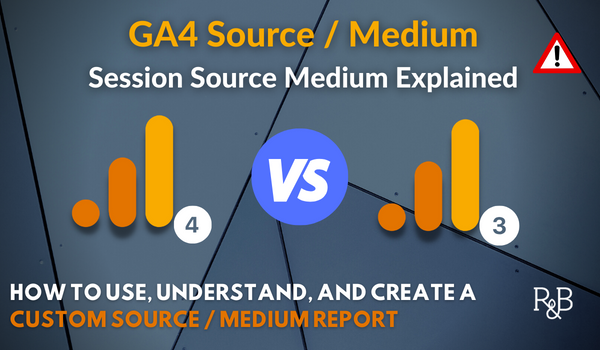Comprehending Secondary Dimensions in Google Analytics: Meaning and Tactical Combination
Comprehending Secondary Dimensions in Google Analytics: Meaning and Tactical Combination
Blog Article
Revealing the Influence of Additional Dimension in Google Analytics on Information Analysis and Insights
In the world of information analytics, the application of secondary dimensions within Google Analytics has emerged as an essential device for extracting much deeper understandings and unraveling complicated patterns that might otherwise remain obscured. By peeling back the layers of key data sets, secondary dimensions supply a nuanced point of view that enhances the understanding of individual habits, internet site efficiency, and the efficiency of advertising methods.
Discovering the Principle of Secondary Dimensions
Secondary dimensions in Google Analytics give additional insights by permitting customers to analyze key data together with a secondary attribute. This function makes it possible for an extra extensive understanding of the primary data by adding another layer of information for evaluation. By integrating second dimensions, users can dive much deeper right into the data and discover useful correlations that may or else go unnoticed. By coupling the main data of web site traffic with additional dimensions like demographics or actions, marketing experts can acquire an extra extensive sight of their audience and customize their methods as necessary.
Recognizing the concept of second measurements is critical for making best use of the capacity of Google Analytics. It allows individuals to sector data successfully, recognize patterns, and make informed decisions based upon a more complete photo of their analytics information. By checking out the various secondary dimensions offered in Google Analytics, customers can open new insights and enhance their electronic marketing initiatives. Essentially, second measurements function as an effective tool for enhancing data analysis and driving actionable outcomes.
Enhancing Data Analysis With Secondary Dimensions
Having actually established the fundamental understanding of second measurements in Google Analytics and their critical role in information evaluation, the emphasis currently moves in the direction of leveraging these second characteristics to enhance the analysis of analytics data (what is a secondary dimension in google analytics). By incorporating secondary measurements into information analysis, experts can obtain deeper understandings into user actions, internet site performance, and marketing performance

Additionally, secondary measurements assist in contextualizing primary data metrics by giving extra layers of information. This contextualization help in comprehending the 'why' behind the information trends, aiding analysts make educated decisions and optimizations to boost total performance. Ultimately, incorporating second dimensions improves the data interpretation procedure, causing even more significant insights and calculated actions.
Discovering Hidden Insights Via Additional Measurements
Checking out the midsts of analytics information with second measurements discloses beneficial understandings that would certainly otherwise continue to be obscured. By incorporating second dimensions in Google Analytics, businesses can uncover covert patterns, fads, and correlations that provide a more thorough understanding of user actions and site efficiency. These extra layers of data enable analysts to dig much deeper into the primary measurements, such as website traffic sources or landing pages, and get a much more nuanced point of view on just how various variables interact with each other.
With making use of additional measurements, experts can sector and compare information throughout various dimensions, enabling them to determine particular elements that affect customer involvement, conversion rates, and general success metrics. By matching the primary dimension of 'tool category' with the additional measurement of 'age team,' online marketers can identify which age demographics choose accessing the site with mobile tools versus desktops. This degree of granularity encourages businesses to make data-driven decisions and enhance their approaches for far better outcomes. Eventually, discovering covert understandings with additional dimensions enhances the deepness and precision of data evaluation, bring about even more informed decision-making and improved efficiency results.
Leveraging Secondary Dimensions for Actionable Analytics
Building upon the understandings unveiled via secondary measurements in Google Analytics, businesses can currently harness this enriched data landscape to drive workable analytics and strategic decision-making. By leveraging second measurements, organizations can dig deeper right into their data to extract beneficial patterns, patterns, and correlations that may have formerly gone undetected. This much deeper degree of analysis makes it possible for companies to obtain an extra comprehensive understanding of individual actions, campaign efficiency, and overall internet site effectiveness.
One secret benefit of making use of secondary measurements for actionable analytics is the capability to sector information based on particular requirements. This division permits services to customize their methods and projects Get the facts to different target market teams, leading to much more targeted and efficient advertising initiatives - what is a secondary dimension in google analytics. Additionally, secondary dimensions supply a more alternative sight of customer communications, allowing organizations to enhance their web site web content, layout, and total user experience
Optimizing Decision-Making With Second Measurements
To boost strategic decision-making in analytics, leveraging secondary dimensions in Google Analytics can supply a much more nuanced point of view on individual habits and project performance. By integrating secondary measurements right into information evaluation, organizations can dive much deeper into the specifics of their website visitors' communications and involvement patterns. This additional layer of information permits an extra thorough understanding of just how various variables, such as demographics, devices, or traffic resources, influence crucial efficiency indications.

Verdict
To conclude, making use of secondary measurements in Google Analytics plays news an essential duty in improving information evaluation and discovering hidden insights. By discovering this concept, one can gain a much deeper understanding of user habits and make informed choices based upon workable analytics. Leveraging secondary measurements permits for a more thorough interpretation of information and maximizes the performance of decision-making processes.

Report this page